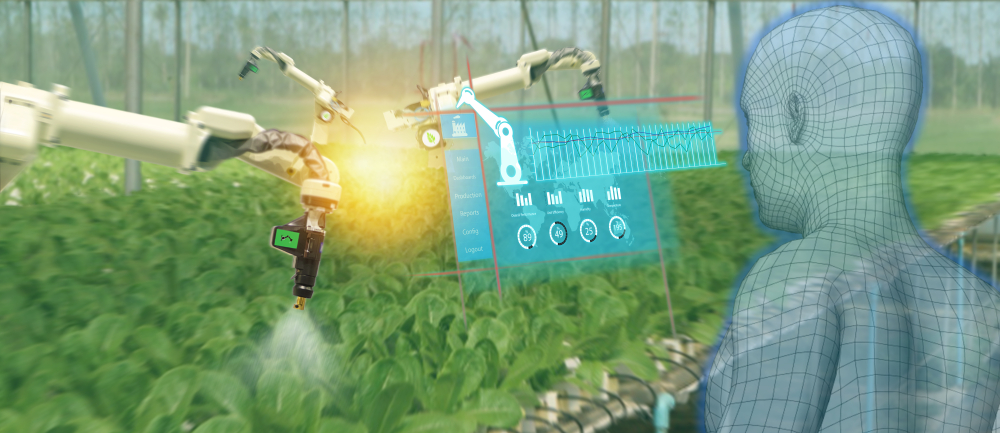Unlock AI Insights and Innovations
Explore Expert Analyses, Industry Trends, and Practical Applications of Artificial Intelligence and Machine Learning
Discover the latest in Artificial Intelligence (AI) and Machine Learning (ML) with our expert-driven articles, covering AI trends, deep learning breakthroughs, natural language processing (NLP), and data science innovations. Whether you're seeking technical deep dives on neural networks, AI model development, and data imputation techniques, or exploring how AI is transforming industries like healthcare, customer service, and business automation, we have you covered. Stay ahead with cutting-edge AI research, industry insights, and practical applications designed to help businesses and tech professionals leverage AI effectively.
Pickleball’s popularity is skyrocketing, and the subsequent ER visits have spiked a staggering 88% right alongside it. What if a quick courtside video could flag risky knee angles before they sideline you? Explore how AI body pose analysis AI can turns your phone into a personal coach, cutting injury risk and fast-tracking rehab so you can stay in the game.
The generative AI gold rush has companies racing to implement the technology, yet Gartner predicts 30% of projects will be abandoned by 2025. The difference between the winners and the $21-million-per-month failures? Knowing when generative AI is the wrong tool entirely. This reality check reveals which use cases actually work, the brutal production costs most demos ignore, and why the smartest companies are shifting strategy. Don't become another expensive cautionary tale, learn how to separate the hype from what actually delivers results.
Pressed for an AI demo yet still hunting for talent? In this article we tackle the CTO’s eternal quandary: build an in‑house AI team or embed external experts. Get the reality check on hiring timelines, hidden costs, and why a hybrid “accelerate now, own later” model is winning. Skim the quick‑fire decision framework before your competitors ship first.
Up to 80% of AI projects fail, but not for the reason you think. It’s not the models. It’s not the tools. It’s what happens before and after the code that kills most AI initiatives. But a few companies are turning this around with a smarter, faster, more scalable approach that makes AI initiatives succeed. This article breaks down what they’re doing differently.
Under pressure to implement AI but facing a talent shortage? This article reveals how fractional AI teams are becoming the secret weapon for resource-constrained companies. Discover how these embedded machine learning experts can accelerate your innovation, bypass lengthy hiring cycles, and deliver results at a fraction of the cost of building an in-house team. Learn when this approach makes sense, and how it might be the missing piece in your AI strategy.
As AI detection tools increasingly flag innocent students for "robotic writing," we're entering a world where students must defend their genuine authorship against algorithms. Educational institutions face a pivotal choice: continue down a path of surveillance and suspicion, or embrace a future where AI literacy replaces fear with responsible collaboration. This inflection point demands we redefine academic integrity for our world, in which the boundaries between human and machine creativity have become permanently blurred.
AI adoption has surged to 72% of companies worldwide, yet most struggle to capture full value at scale. This practical guide cuts through the noise to help you identify AI opportunities that truly matter for your business. Learn how to understand the 2025 AI landscape, align AI with high-value product enhancements, leverage generative AI for transformative features, and conduct a data inventory to uncover hidden potential. Don’t get left behind, learn how to start your innovation journey today with this strategic roadmap and join the companies turning their AI dreams into reality.
When DeepSeek claimed to have trained a top-tier AI model for a fraction of the usual cost, the tech world took notice—but was it truly a breakthrough, or just clever marketing? With unprecedented transparency and bold promises, DeepSeek challenged the norms of AI development, sparking excitement and skepticism alike. In this article, Xyonix’s Marketing Coordinator, Jessie Dibb, sits down with AI expert Carsten Tusk to cut through the noise, separating fact from hype and unpacking what it means for the future of AI.
Missing data can disrupt machine learning workflows, but imputation can help fill in the blanks to keep your models on track. Autoencoders, a type of neural network, excel at reconstructing data by learning complex patterns, outperforming traditional methods like random forest imputation. In our experiment on housing data, autoencoders reduced errors by 3-6 times across features, proving their effectiveness in handling intricate feature relationships. This makes them a powerful tool for imputation and beyond, with applications in denoising, feature extraction, and anomaly detection.
In this year-end roundup of “Your AI Injection,” we spotlight five episodes that touch on AI’s most pressing ethical and societal questions. Each conversation challenges the notion of what should be built—rather than just how—covering topics from data strategy and personalized tutoring to energy regulation and AI-driven manufacturing. These episodes emphasize AI’s immense potential while underscoring the critical need for transparency, equity, and responsible development.
80% of AI projects fail—not because the technology isn’t ready, but because businesses aren’t. Companies that thrive with AI begin by identifying clear, high-impact problems it can solve, backed by quality data and a strategic vision for success. This article explores the critical elements of AI readiness: defining your business challenges, ensuring your data infrastructure is robust, and leveraging AI to gain a competitive edge. Whether it’s automating repetitive tasks, personalizing customer experiences, or predicting trends, the key to success isn’t adopting AI early—it’s adopting it smartly. Learn how to assess your readiness and prepare for an AI-powered future.
In 1912, the RMS Titanic hit an iceberg in the North Atlantic Ocean about 400 miles south of Newfoundland, Canada and sank. Unfortunately, there were not enough lifeboats onboard to accommodate all passengers and 67% of the passengers died. In this article, we walk through the use of SHAP values to explain, in a detailed manner, why an AI model decides to predict whether a given passenger will or will not survive.
Explore how AI-powered virtual concierges are transforming customer service in industries like hospitality and education. With 80% of customers likely to switch brands after two bad experiences, businesses are turning to AI to meet rising expectations. This article delves into real-world examples of AI concierges offering personalized recommendations, streamlining tasks like bookings and check-ins, and supporting students with career guidance—all while allowing human teams to focus on more complex customer needs.
The global food supply is on the brink of crisis. Facing challenges like an aging workforce, labor shortages, declining crop yields, and climate change amongst others, farming is in dire need of a lifeline. AI and AgTech are emerging as the saviors of agriculture, transforming everything from crop breeding to farm-to-table traceability. These revolutionary technologies promise to enhance sustainability, improve yields, and reduce environmental impact. With the urgency for innovation greater than ever, AI is the essential lifeline the agricultural industry needs to secure a resilient and efficient future.
The global AI market is expected to reach $126 billion by 2025 — however building an in-house AI team can be costly, with an average salary for AI specialists at $150,000 annually. Outsourcing your AI development offers significant advantages, including cost savings, access to expertise, faster implementation, scalability, and the ability to focus on core competencies. Companies can save up to 60% in operational costs and leverage the latest AI technologies without the burden of maintaining a large in-house team, making outsourcing a strategic solution for many businesses.
Chatbots, now omnipresent, face a crisis of accuracy and security highlighted by recent public blunders at Air Canada and Chevrolet, where bots made unintended promises. Air Canada's attempt to deflect blame onto its bot was rejected by authorities, underscoring a harsh reality: companies are indeed responsible for their bots' actions. Despite the prowess of language models like ChatGPT, their inherent nature to occasionally fabricate with confidence poses unique challenges. Drawing lessons from cybersecurity, this article explores four advanced red team testing strategies aimed at reining in bot misstatements and significantly bolstering chatbot security.
In this article, we delve into the evolution of search technologies, tracing the journey from the conventional keyword-based search methods to the cutting-edge advancements in semantic search. We discuss how semantic search leverages sentence embeddings to comprehend and align with the context and intentions behind user queries, thereby elevating the accuracy and relevance of search outcomes. Through the integration of vector databases such as OpenSearch, we illustrate the development of sophisticated semantic search systems designed to navigate the complexities of modern data sets. This approach not only delivers a more refined search experience but also enhances the precision of results by accurately interpreting the intent of user inquiries, representing a notable leap forward in the progression of search technology.
AI chatbots are transforming customer service by providing 24/7 availability and interactions that resemble human conversation. It's anticipated that by 2025, 80% of customer support will utilize Generative AI to improve the customer experience and increase agent efficiency. However, the swift adoption of this promising technology has faced obstacles, particularly miscommunications that have risked brand reputations. To prevent inaccuracies it's essential to adopt thorough AI testing and certification processes. In this article, learn more about why rigorous testing and certification are critical for the successful integration of AI chatbots in customer service.
As 2023 draws to an end, we reflect on a year of remarkable growth and insights in artificial intelligence through the lens of Your AI Injection. This year's episodes have been a treasure trove of knowledge, featuring discussions on AI's role in mental health therapy, the evolution of virtual concierges, AI-assisted memory extension, and more. If you're curious about the future of AI and its practical applications, these episodes offer a compelling and informative journey, illuminating AI's potential to reshape various aspects of our lives. Learn more about our top podcasts of the year in this article:
The Director of Innovation plays a crucial role in a company by staying informed about various technological advancements to maintain the company's competitive edge. In 2024, the key focus is generative AI, a technology prevalent in headlines and discussions across various domains, including everyday settings. Learn more about the relevance of AI in trend analysis, opportunity identification, and strategic planning in this article.
AI has rapidly evolved into a daily necessity by 2023, with GPT-4 marking a significant leap in language models and public awareness. This advancement has spurred transformative changes across various sectors, particularly in creative fields. In this era, companies embracing innovation and risk-taking are leading the new AI age, with generative AI emerging as a pivotal tool reshaping business possibilities.
Recent advancements in AI technology have reshaped everyday life and industries, introducing autonomous functionality in products like Tesla's Autopilot and Roomba, and opening up new frontiers in complex problem-solving. This article explores the rapid progression towards a future where AI is not just a tool, but a collaborative force in driving human progress.
With the rise of AI-powered virtual concierges, businesses have an opportunity to enhance customer service and engagement. These digital assistants can navigate customers through various services and products, and improve the overall customer experience. This article explores five compelling reasons why businesses should embrace virtual concierges to fuel their growth, focusing on improving customer service quality and fostering long-term customer loyalty:
Large Language Models (LLMs) are increasingly popular due to their ability to complete a wide range of tasks. However, assessing their output quality remains a challenge, especially for complex tasks where there is no standard metric. Fine-tuning LLMs on large datasets for specific tasks may be a potential solution to improve their efficacy and accuracy. In this article, we explore the potential ways to assess LLM output quality:
AI can be used to generate regional forecasts of infectious disease rates that, in turn, empower government and other leaders to make prudent social distancing and other preemptive modifications. As a case study, we will look at influenza data supplied by the Centers for Disease Control. Our goal is to use ILI data to train a model that will accurately predict future seasonal flu levels.
Artificial intelligence has the potential to be a game changer by offering innovative solutions in monitoring, motivating, and sustaining positive habits related to medical adherence.
You probably suspect AI can dramatically improve your business, but perhaps you are not sure exactly how -- perhaps you are even worried that a start up or tech company is gunning for your business. Ask yourself two questions: 1. what are the high level business problems that could be transformational if solved and 2. which business problems are feasible to solve with AI to some meaningful degree.
The insurance industry is moving towards a more tech-driven future with the help of natural language processing (NLP). Artificial intelligence could improve productivity and save up to 40% on insurance costs by 2030, according to a 2021 McKinsey report. In this article we address how you can utilize NLP to automate customer service, streamline underwriting, and analyze social media data:
When securing executive buy-in for your potential AI project, there are a number of considerations to keep in mind. It’s necessary to prepare a strong proposal that not only takes account the motivations of your leaders, but also makes a case for your project’s technical feasibility. In this article we dive into five tips to consider when attempting to secure executive buy-in:
The demand for data scientists has never been higher, and 86% of executives claimed that AI would be a “mainstream technology” at their companies in 2021. As Artificial Intelligence becomes more widely adopted in business practices, many companies are beginning to utilize AI Consultancies to optimize customer experience, reduce cost, and more. When starting a new AI initiative, working with an experienced consultant is the way to go. That’s why we curated this list of top 5 reasons you should hire an AI Consultant.
AI can be used to generate regional forecasts of infectious disease rates that, in turn, empower government and other leaders to make prudent social distancing and other preemptive modifications. As a case study, we will look at influenza data supplied by the Centers for Disease Control. Our goal is to use ILI data to train a model that will accurately predict future seasonal flu levels.
How we communicate and conduct business will likely forever be changed as a result of the COVID-19 pandemic. While telecommunication technologies have helped ease our burden, we simultaneously face a looming mental health crisis. With a burdened healthcare system and a large population at risk in isolation, innovative solutions are required to help those in need and to facilitate more informed communication.
Imagine a world where at home AI healthcare tools get smarter and more able to heal you every day. These tools are incredibly data driven — where they are continuously collecting data off your body, about your environment, your nutrition and activity — and then these algorithms are continuously learning from this data not just from you, but from millions of other patients and doctors who know how to make sense of this information.
The national weather service operates a massive sensor array including sensors located on weather balloons, in airplanes, on land, in sea buoys, and from satellites. Just like a confluence of variables can indicate a hurricane is on the way, we believe an infectious disease forecasting service powered by AI can predict the likelihood of a new wave of C19 and other infectious diseases.
Professional athletes have long had the advantage of analysis from expensive body worn sensors. AI models, when applied to readily available video, however, offer much promise to more cost conscious amateur athletes. We ask the question, can we better an individual goalie’s chances of stopping a penalty kick with advanced AI?
Can amateur athletes improve their performance using artificial intelligence and nothing more than a smart phone? As an AI practitioner and a dedicated runner, I decided to find out leveraging body pose estimation, an advanced AI technology that automatically generates a skeleton for people in each frame of a video.
Every day, billions of people communicate via email, chat, text, social media, and more. Understanding the conversation begins with understanding one document. Once we can teach a machine to understand everything in a single document, we can project this understanding up to a collection, thread or larger corpus of documents to understand the broader conversation.
From detecting pests to predicting which crops will deliver the best returns, artificial intelligence can help humanity oppose one of its biggest challenges: feeding an additional 2 billion people by 2050 without harming the planet. AI is steadily emerging as an essential part of the agricultural industry’s technological evolution including self-driving machinery and flying robots that are able to automatically survey and treat crops.
If you're paying attention to the tech media, you've probably heard a lot of the doomsday prophecies around artificial intelligence. A lot of it is scary, but despite some valid concerns, AI is doing a lot of good. Medical treatment, reduced traffic jams, faster disaster recovery, and safer communities – it’s all coming your way.
Throughout the diagnostic related care cycle, physicians are observing and understanding patterns. Pattern recognition is the key task for understanding the results of clinical scans. Neural networks, an automated pattern recognition capability, shows strong promise in predicting cancer and segmenting specific tumors for breast cancers, rectal cancers, and other categories of cancer that affect many Americans each year.
AI systems often serve as additional ‘team members’ of the practice structure -- this team member just happens to be extremely good at assimilating vast stores of knowledge and delivering insights extremely fast without ever tiring.









































Vannot is an open source, web based, and easy to integrate video annotation tool we created to help efficiently annotate objects for use in machine learning tasks like video segmentation and imagery quantification.